The post Duda Review: An easy way to build social-ready sites appeared first on Inside Social Media.
]]>
By now, we all know that our own websites need to be optimized for social media integration. Driving cross-channel engagement is pivotal to any content marketing success. We need site visitors to see that we’re active and influential on social media, we need to entice them into following us on these branded third-party presences so we can nurture them as leads.
Then, we need to make sure it’s easy for them to share our content with their audience members, expanding our reach to new prospects.
But creating social media optimized websites at scale is another matter. If you’re in the business of designing, developing and rolling out websites for a rolling roster of clients, then making sure that each site is social-ready can be a hassle.
Indeed, true usability often comes at the expense of versatility and scalability, especially when digital agencies are using modern “DIY” tools that heavily depend on prefab themes and templates for customizability.
The good news is, these drawbacks don’t really come into play with Duda — an online platform that web development agencies can use as ground zero for their services.
Despite the smooth learning curve, Duda is fully-armed with advanced features that can help agencies build unique, fully-functional, and social-ready websites for their clients.
Apart from the website creation aspect, Duda also focuses on technology that empowers branding, client communications, and internal collaboration.
More importantly, it has an abundance of tools that help incorporate social media elements into the website projects of digital agencies.
Curious how it works?
Then let’s dig deeper into the inner-workings of Duda’s agency-friendly social media features.
A Look at the Duda Editor
First off, the Duda Editor checks off all the factors that make web development easy:
- A drag-and-drop toolbar for adding page elements? Check.
- A live preview where you can freely adjust, resize, and move sections?Check.
Duda also comes with powerful widgets that let you integrate advanced functionality within seconds.
Let’s take a look at the “Social” elements you can seamlessly weave into your pages:
1. Social Sharing Buttons
Adding social sharing buttons to a web content is one of the must-haves of a social-ready site.
Naturally, they encourage visitors to share content on social media networks — thus, exposing the content to even more readers and contributing to your clients’ social presences.
To add social sharing buttons to your clients’ Duda website, expand the “Widgets” tab from the main toolbar and scroll down to the “Social” section. From there, drag and drop the “Share” widget anywhere on the page.
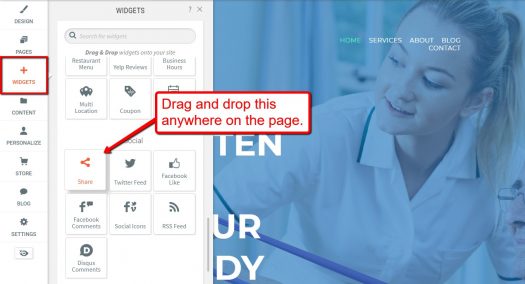
That’s it! You’ve just installed social sharing buttons on your Duda website.
Take note that the same steps apply when using the rest of the plugins mentioned in this post. You can also adjust each widget’s width and spacing via the sliders on the pop-up window.

For more advanced customizations, you can use animations as well as CSS/HTML code changes through the settings menu. This gives you more options to play with when customizing the user experience.
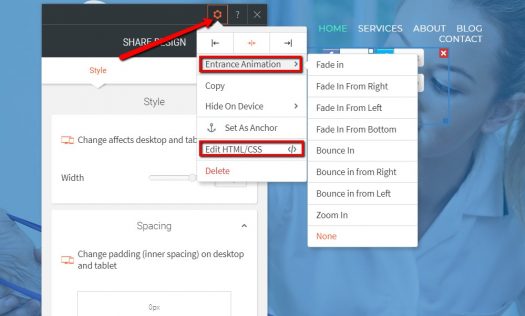
2. Twitter Feed Content
To help visitors stay in tune with the latest news regarding your brand, you can use the “Twitter Feed” widget to display your latest tweets.
Once added to your page, the pop-up window allows you to specify the Twitter username you’d like to pull updates from. You can also choose to display content from a Twitter profile, replies, and favorites.

Of course, you can also modify some of the Twitter Feed widget’s appearance attributes, namely the header’s visibility, the number of tweets shown, and the widget’s spacing.
3. Facebook Like Button
A Facebook “Like” button is as simple as social media interactions can get. It offers visitors a convenient way to gain an audience for retargeting on the most powerful social network.
There really isn’t much to set up in the “Facebook Like” widget. You just have to specify the Facebook URL to be liked and make sure it’s positioned where it makes sense, like in the top navigation area or footer.
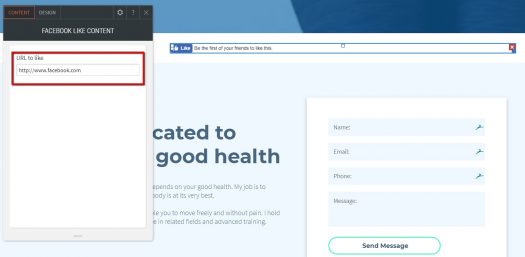
If your content happens to accumulate a significant number of likes on Facebook, consider using a layout that shows the number of likes. Doing so lets you leverage this metric as “social proof,” which will help you win the confidence of even more visitors.
To switch between the different formats, click the “Design” tab on the Facebook Like widget and open the “Layout style” drop-down menu.
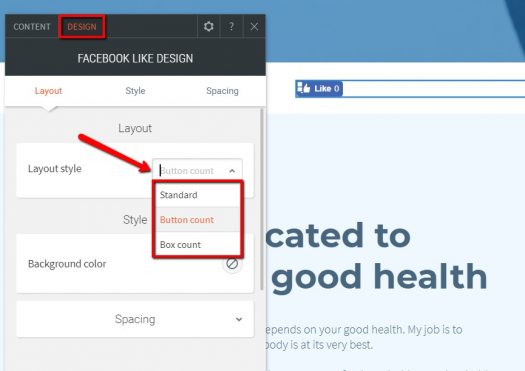
4. Facebook Comments
Having a comments section on your website is a great way to engage readers as well as get their feedback. Unfortunately, users are sometimes discouraged to leave comments because blogs require them to provide their email address first.
Enabling Facebook comments on your page is a neat workaround for this problem. Rather than requiring them to share their email address or any other sensitive information, they can simply leave comments using their Facebook identities, which are – in theory, anyway – less likely to be used for comment spamming too.
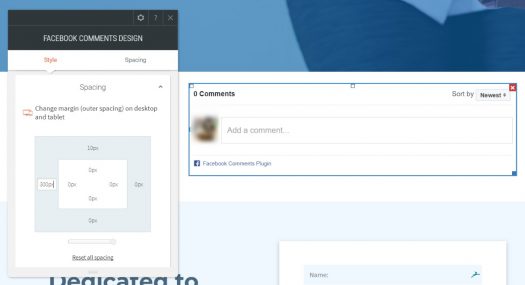
5. Social Media Icons
With the “Social Media Icons” widget, you can encourage your audience to connect with your brand through other channels, be it on Facebook, Twitter, Instagram, or via email.
After adding the widget to your page, select the social media icons you want to use on the “Social Icons Content” window.

You will then be able to fill in the necessary details, such as your clients’ social media URLs and email addresses.
To make sure your social media icons match the website’s design and color scheme, go to the “Design” tab and choose from one of the available layouts.

Other Social Features of Duda
In addition to widgets that connect Duda with social media platforms, there are a few more that you can use to enable visitors to interact with your client’s brand.
One example is the “Yelp Review” widget, which, as the name suggests, lets you aggregate reviews from a Yelp business page into your client’s website.

Here are a few more features digital agencies can utilize on clients’ websites:
- Disqus Comments Integration
- RSS Feed Widget
- Customizable Contact Form
- PayPal Integration
- Coupons
Since the widgets themselves are natively developed within Duda, agencies need not worry about potential compatibility issues that can break websites. This is a big advantage, considering the fact that conflicts between plugins anaasdd external services are huge in other well-known platforms.
What’s more, with Duda’s libraries of custom “sections,” once you have a particularly awesome configuration of social media integrations set up for one client’s site, you can group them into blocks of page elements for reuse and customization on additional content sites. This is a major game changer when it comes to scalable project management.
Conclusion
Integrating social media elements into the websites you create for your clients is crucial if you want to help them get more mileage out of their web traffic.
With Duda, you don’t have to purchase several tools to optimize the way your online agency operates.
With its one-stop-shop solution for digital agencies, you pretty much have all you need in a single platform.
If you’re interested in trying Duda for yourself, check out the free 30-day trial on their website.
The post Duda Review: An easy way to build social-ready sites appeared first on Inside Social Media.
]]>The post 5 Alternatives to LinkedIn Elevate for Superior Employee Advocacy appeared first on Inside Social Media.
]]>
Are you in the hunt for an employee advocacy platform? Would you like some alternatives to LinkedIn Elevate for superior employee advocacy?
Over the years LinkedIn has released several useful features and tools that have helped distinguish the platform as the go-to social network for business. While the other popular social networks only seem to be copying each other’s latest top functionalities, LinkedIn stands apart in this regard. After all, the B2B value of social media use is completely different from B2C uses.
One of the tools released by LinkedIn that has grown to be especially popular is LinkedIn Elevate, an employee advocacy platform. It does exactly as the name suggests, which is making it easy for employees to support their employers’ content distribution efforts – while positioning themselves as industry thought leaders at the same time.
Using an algorithm and/or manually curated links, LinkedIn Elevate finds content that your target audience likes and suggests it to your team members. Employees can sort through these posts and share the content they like most on LinkedIn, Facebook and Twitter. Businesses can track these shares to see if they resulted in an increase in brand exposure, traffic, leads captured and talent attracted.

Image source: https://business.LinkedIn.com/elevate/why-create-social-employees
Most businesses using Elevate see significant traction, which makes sense given the power of employee advocacy as a tactic in general. Data from Smarp, another advocacy solution, indicates that employee advocates have an average of 420 Facebook friends, 400 LinkedIn contacts and 360 Twitter followers. That’s a content distribution opportunity that B2B marketers should not overlook.
While piloting LinkedIn Elevate, Adobe found that the average participating employees drove 80% more job listing views plus three to four trial downloads of Adobe software products. This is because when people check out the profiles and content of your employees, they will also check out the company they work for and the products they offer. What’s more, 83% of people trust recommendations from friends and family more than any other form of advertising, according to Nielsen.
Another big benefit of using an employee advocacy tool is that it helps employees feel more invested to their companies. This sentiment can help promote a sense of cohesive culture and increase performance.
But to successfully execute employee advocacy, you don’t need to use LinkedIn Elevate. There are several alternatives that specialize in this niche and offer superior features and user experiences. You should be able to find one based on your specific needs and budget with ease, instead of just opting for the one offered by LinkedIn.
Here are my picks for the top alternatives to LinkedIn Elevate.
- Smarp
Smarp is an advanced employee advocacy platform, which has several useful features that LinkedIn Elevate doesn’t. These include gamification, internal communications and ROI-focused analytics.
With Smarp, admins can either share link updates or standalone content updates like text and images. Hence, you should be able to share content that will drive both traffic and engagement. You can schedule the update in advance and set a time to archive it in case it is time sensitive. You can even move the content around in the feed of suggestions if you want a specific post to gain more exposure.
Smarp can also automatically pull content from your social media pages and RSS feeds, so that every new post on your blog will automatically aggregate to your Smarp feed of suggested shares. You can use this feature to feed content from trusted niche-relevant publications and co-marketing partner organizations as well.
Employees can share the content you add onto Facebook, Twitter and LinkedIn, as they can with LinkedIn Elevate, but Smarp also supports additional channels like WeChat, Xing, VK and Weibo, plus the ability to easily share via copy-pasted URLs. Team members can also comment on the updates to engage with others from your company. These discussions can be used to not only share content of maximum interest in the future, but to also to collaborate for creating quality content for your blog. Employees can also easily find content they like, by using the topic navigation tabs at the top of the feed.
Smarp offers a responsive web app, as well as native apps for Android and iOS. This makes it easy for your employees to access suggestions and discussions, so they can share from anywhere.

Image source: http://www.smarp.com/
As mentioned above, Smarp has a gamification feature, with an employee leaderboard that helps to motivate shares. You can even integrate incentives like company swag, bonuses and charity donations, to sweeten the deal for top sharers. LinkedIn Elevate’s leaderboard, on the other hand, is only available to admins, as part of the analytics – it isn’t a core functionality.
One of Smarp’s best features is its advanced analytics. Employees can access metrics relating to engagement on their own shares, while admins can view company-wide metrics, or drill down into per-channel, per-employee and per-post performance.
Personal analytics has a feature called SmarpScore, which makes it easy to measure how one’s professional influence progresses over time. Another cool feature of the analytics tools here is an “earned media value” metric, which estimates what you might have paid in social media advertising to achieve comparable reach.
- Dynamic Signal
Dynamic Signal is another leading employee advocacy platform. You can use it to post your latest industry news and company updates. Employees can access this information via a mobile app and stay informed about your company and the trends that matter in your niche, and they can share updates directly from the mobile app onto social networks like LinkedIn, Facebook and Twitter.
It integrates with Facebook Messenger and Slack, too, so that you can push share recommendations and messages to employees via these apps.
You can also boost engagement and get plenty of feedback from employees by using surveys and quizzes. This information can be used to strengthen company culture and to create content employees want to share on social media.

Image source: http://dynamicsignal.com/
Dynamic Signal’s analytics tools allow you to track an item’s potential reach, which is based on sharers’ audience size. This allows you to target and engage employees with the right types of content. You can also access rich reports that drill down into each team member’s app use, including logs of logins, posts viewed and shared and even devices used.
This is where Dynamic Signal shines most brightly. The emphasis here is on improving communications between employees and company management.
- Bambu
Created by the team from the social media management platform Sprout Social, Bambu is the fourth employee advocacy platform we’ll look at today as a viable alternative to LinkedIn Elevate. Bambu lets you craft and post custom social media updates, so that they are ready for sharing onto Facebook, Twitter and LinkedIn. You can include notes along with the content so employees understand the relevance, urgency and/or strategic context of the update.
The analytics reports on Bambu let you identify top sharers and performance per item of content, per channel and per user. The metrics on offer are extremely basic, but the visualizations are clean and accessible.

Image source: https://getbambu.com/
Bambu’s calming user interface is definitely better than that of GaggleAMP. But the internal communication features aren’t robust enough, and while the “big three” social networks are likely to do the job for many organizations, others are looking to engage elsewhere as well. What’s more, there are no gamification features like on Smarp. This can reduce the number of shares posts get, as you can’t incentivise sharing nor create a sharing contest among employees.
For companies that are already using Sprout for their social media monitoring, measurement and scheduling, it probably makes good sense to add Bambu to the stack. Otherwise, the other tools in this article may be better matches for your advocacy needs.
- PostBeyond
One of the more helpful employee advocacy platforms, PostBeyond also offers solutions for brand resource management, employer branding, process management and social selling.
You can create a content library where you add blog posts, job listings, white papers, press releases, etc. either directly or with their browser extension. Content can also be sourced from social media, RSS feeds and even spreadsheets for bulk uploads. Items can be shared with all employees or certain combinations of employees, which are easy to manage via PostBeyond’s “Groups” admin panel.
In addition to native PostBeyond feeds, admins can send employees regular email updates with roundups of key items for viewing or sharing, simply by selecting a Group audience and ticking whatever item checkboxes are relevant.

Image source: https://www.postbeyond.com/product/
Employees can access PostBeyond on the devices of their choice and then share content on Twitter, LinkedIn or Facebook. Channel diversity is limited, but PostBeyond makes up for this shortcoming with the depth of analytics reporting on offer. It’s possible that their product team made a decision to only work with social networks whose APIs can support their rich reporting.
The analytics here can reveal shares, impressions, comments and other engagement metrics, with the ability to easily slice this data according to audience geolocation or PostBeyond Group.
Activate Your in-House Army of Sharers
LinkedIn Elevate might be the best-known employee advocacy platform, but it is hardly the best. As you can see, there are plenty of alternatives, and each has its specialty. Smarp is the only complete tool, as it helps with content distribution, internal communication, gamification and ROI-focused analytics. Dynamic Signal mainly focuses on internal communication, while GaggleAMP is only about driving action on social media and other digital channels.
I recommend that you check out all the tools in detail by signing up for trials and demos, and then pick the one that fulfills all your functionality and budgeting needs.
Which tools do you use for your employee advocacy strategy? How have they worked for you? Please leave your comments below.
The post 5 Alternatives to LinkedIn Elevate for Superior Employee Advocacy appeared first on Inside Social Media.
]]>The post How to create mobile-friendly content with Google’s AMP appeared first on Inside Social Media.
]]>Target audience: Businesses, brands, mobile marketers, digital marketers, advertising agencies, SEO specialists, entrepreneurs, educators, journalists, Web publishers.
Post by Anna Rodriguez
 A lot has been said about Google’s Accelerated Mobile Pages (AMP) and how it affects business owners, startups and digital marketers. AMP is a Google-backed open-source project that launched last February as an open standard to make it easier for any publisher to have pages load quickly on mobile devices.
A lot has been said about Google’s Accelerated Mobile Pages (AMP) and how it affects business owners, startups and digital marketers. AMP is a Google-backed open-source project that launched last February as an open standard to make it easier for any publisher to have pages load quickly on mobile devices.
In an increasingly mobile world, AMP is a tool or open source framework that speeds up browsing when you’re using a mobile phone or or tablets. Think of it an easy way to build lightweight web pages.

The wonders of AMP
AMP, like Facebook’s Instant Articles and Apple’s Apple News, is designed to reduce bounce rates and improve users’ social media experience. With this framework, publishers need not worry that their target audience is ignoring their content because it’s too cumbersome to read on a smartphone. AMP boosts loading speed by as much as 85%, significantly cutting bounce rates.
Google’s new framework is not yet considered a factor in page ranking, but its indirect impact cannot be understated. Some of the most influential ranking factors are content quality, content length, image optimization and multimedia. Google is also placing more and more emphasis on speed and mobile friendliness. An AMP-optimized page with quality content will increase its chances of making it to the top of research results. Thus, AMP improves ranking albeit incidentally.
Perhaps the most important benefit of AMP to businesses and publishers is increased advertising revenue. AMP “seeks simultaneously to create a great user experience, to give more autonomy to publishers to deliver that and to develop effective advertising for the mobile Web,” according to Tony Danker, chief strategy officer at Guardian News & Media. Google’s new framework restricts pop-ups widely used for online ads. However, there are ad technologies such as Google AdSense, Amazon A9 and AdTech that businesses and publishers can use in concert with AMP. Developers are also working on more AMP extensions to enable paywalls and subscriptions.

AMP leads mobile publishing
In May 2015, Facebook launched Instant Articles. Apple’s Apple News was released a month later. Facebook allows users to open pages without leaving the Facebook environment. Publishers may import their content with the Instant Articles API, an RSS feed or use a third-party platform like WordPress. Apple News enables publishers to create articles directly in its News Publisher or import articles through the Apple News API.
In October 2015, Google’s AMP offered an easier alternative for publishers to distribute content. By adding HTML extensions, a Web page is optimized without needing to go through an app or third-party platform. Businesses are also spared the extra task of re-creating articles.
“If there’s one partner to get in bed with, it’s Google, because they’re always on the up-and-up,” Noah Szubski, chief product officer at the Daily Mail in London, said recently. He commends Google’s collaborative approach and easy access to leadership and engineers. “You get all the tracking, you get the ability to monetize, your AMP pages look the way you want them to look,” he says.
The New York Times, Wall Street Journal, BBC, Financial Times and the Daily Mail are a few of the publishers that tip their hat to AMP’s positive effect on their social media sharing, and they’re effectively use AMP to expand their readership.

The international cast of social media mobile businesses
The future of the Internet is in mobile. More than half of the world’s population consists of active mobile phone users. This rate has been increasing at an average rate of 16% annually. Social media is the new battlefield for information and online business. Instagram is more than a photo-sharing site for many Asian users. The Facebook-owned site is a top shopping venue for Asian consumers.
A recent poll suggests that about 30% of online sales in Southeast Asia occurred via social media sites in 2016. This dwarfs the 7% rate in the US. Indonesia, Malaysia, Thailand, the Philippines and Vietnam are among Facebook Shop’s 10 largest markets in the world. These emerging markets are projected to help propel the global economy in the decades to come.
With AMP and Instant Articles, businesses are able to market products better and reach more consumers through a faster browsing experience.

AMP & interactions in social networks
How does AMP affect mobile interactions? “A better, faster mobile web is better for everyone, including users, platforms like Pinterest, and publishers,” Jon Parise, product engineer at Pinterest, wrote on the Pinterest blog. According to a Google study, 40% of users abandon pages that take more than 3 seconds to load. This is alarming for publishers and online businesses.
Before AMP, Nuzzel’s founder Jonathan Abrams tried various ways to improve website speed from reducing server response time to optimizing images. “A page loads in less than half a second when Google’s Accelerated Mobile Pages is enabled,” he said recently.
Evidently, AMP improves social media interactions. Publishers can concentrate on producing quality content, including multimedia that can make message delivery more effective. AMP fuels content marketing strategies.

Improving social media interactions via AMP
AMP offers businesses and publishers an overview of relevant data via its analytics tools. By adding the amp-analytics element to the body of the web page, developers can enable page, event and social tracking. Page tracking monitors the number of visitors on a particular page while event tracking measures user interactions with content. The latter can be tracked independently from a page. To know when a user clicks on a piece of social media content, the social interactions analytics captures the number of times users “tweet,” “like,” “share” or perform other social network-related actions. Developers can also create their own configuration to monitor and extract data they need from their social media sites.
With this data, businesses and publishers are guided as they develop more refined mobile and social media marketing strategies. They’re able to define the type of content to produce, the multimedia to use and ways to improve social media interactions.

AMP needs to accelerate further
Publisher Thrillist reported that 15% of its search traffic is generated from AMP while USA News Network attributes 12% of all mobile page views to Google’s open source framework. Now, businesses and publishers want Google to step up the game.
“I’d like to see them offer more advertising options, but the whole premise is speed,” John Potter, chief tech officer at Purch, said recently. Michael Kuntz of USA Today Network adds that they want AMP to be “more about video, branded content, richer opportunities.”
The world’s largest tech companies are seeing the trend in Internet browsing and online business. The future is in social media and mobile browsing. Facebook, Apple, and Google launched platforms in an effort to improve users’ browsing experience and accommodate companies’ business pursuits. Today, Google’s AMP is leading the mobile publishing race.
Are you using AMP on your business’s website?
The post How to create mobile-friendly content with Google’s AMP appeared first on Inside Social Media.
]]>The post Essential viral marketing tools appeared first on Inside Social Media.
]]>This is the second in a series on modern viral marketing techniques extolled by Vincent Dignan of the United Kingdom. Also see:
- 10 rules of branding for your startup or small biz
- Harambe Live: Secrets to blowing up your company’s social channels
Target audience: Businesses, brands, digital marketers, advertising agencies, PR pros, SEO specialists, entrepreneurs, educators, journalists, Web publishers.
 Last week I wrote about a 90-minute workshop on viral marketing put on by Vincent Dignan, a marketing consultant from the UK who seems especially plugged into modern Internet culture.
Last week I wrote about a 90-minute workshop on viral marketing put on by Vincent Dignan, a marketing consultant from the UK who seems especially plugged into modern Internet culture.
While that article mapped out 10 rules of branding for your startup or small business, today I’d like to share some of the nonproprietary tools that you can use to advance your campaign, enhance your brand or earn kudos from your client.
Here are a handful of the best ones Vincent mentioned, some of which I’ve used to good effect:
- You know that timeliness — topicality — dramatically increases engagement on the Web, right? Welcome to the Internet is a Facebook page that scrapes the Web for brand memes, enhancing your likelihood of getting shares. With 2.6 million likes, it has a pretty good pulse on subjects that are top of mind to the digital generation, and while it hasn’t been updated since June 30, you can find similar meme pages throughout Facebook and elsewhere.
- Here’s another topical resource, and perhaps a better one: Ruzzit.com, a site that aggregates viral content, whether it’s a video, image or text. It even had a video up about the death of Florida Marlins ace Marlins Jose Fernandez a few hours after his fatal boating accident this past weekend.

- Snip.ly lets you add a popup, at the bottom left of the screen, to link back to your site when you’re sharing others’ content.
- Later.com bills itself as “the simpler way to plan your visual content marketing” by letting you schedule and manage your Instagram posts. You can also schedule Instagram posts with Buffergram.
- Websta.me/hot will help you find the day’s most widely used hashtags (yes, hashtags go viral, too).

- Canva is a cool design program (go ahead, scrawl across the page with your mouse, it’s fun) and TextCutie is a mobile app that lets you add words to an image you want to share.
- People, even strangers, are much more likely to interact with you one on one via email rather than by using social media. charlieapp.com, type in anyone’s email addy and find all of their social accounts. The trick is finding those email addresses. I use Clearbit. Vincent pointed to Email Hunter (150 email addresses in their database) and Norbert, which starts at $10/day.
- Do you have an email list? kickbox.io will scan your list and help you “clean” your list by getting rid of broken email addresses. Cost: $10 to verify 1,000 email addresses.
- Discover.ly helps you connect your social followings across platforms. See mutual Facebook friends on LinkedIn. See LinkedIn work information on Facebook. See Facebook and LinkedIn connections on Twitter. You get the idea.
- Charlieapp combs through hundreds of sources and automatically sends you a one-page briefing on people you’re going to meet with — before you see them.
- Heads up, journalists and bloggers: Typosaurus will scan your site and point out any spelling errors — for free. Alas, it will only tell you the results one page at a time.
- Instagram: Are you using the ol’ “Double-tap if you agree!” trick?
Not all of these are free, but many of them are free or low-cost. There are lots, lots more tools and tips, but you’ll have to sign up for one of Vincent’s workshops.
What other viral marketing tools are in your bag of tricks?
The post Essential viral marketing tools appeared first on Inside Social Media.
]]>The post Blog2Social: Reshare those evergreen posts appeared first on Inside Social Media.
]]>
Target audience: Businesses, brands, digital marketers, advertising agencies, SEO specialists, entrepreneurs, educators, journalists, Web publishers.
 You know all the hell I go through every time I publish a blog post? The hell I will go through after I hit submit on this post? The process I go into in great depth on If you post it will they come (to read your blog)? Well, I have it all automated now, at least over on my RNNR.us blog (and this is a very low-traffic vanity blog that’s brand new, is not monetized, and I am no fitness star, so when you look at the traffic spikes, keep everything in perspective).
You know all the hell I go through every time I publish a blog post? The hell I will go through after I hit submit on this post? The process I go into in great depth on If you post it will they come (to read your blog)? Well, I have it all automated now, at least over on my RNNR.us blog (and this is a very low-traffic vanity blog that’s brand new, is not monetized, and I am no fitness star, so when you look at the traffic spikes, keep everything in perspective).
 First impression? Well, the proof is in the pudding. After installing Blog2Social onto my RNNR.us WordPress blog, I started resharing every single evergreen post I have ever posted through the plugin. Not just all at once but I also have at least ten queued up for the rest of August. As you’ll see below, reactivating old, previously shared, content through my networks immediately resulted in traffic–both volume and also unique visitors:
First impression? Well, the proof is in the pudding. After installing Blog2Social onto my RNNR.us WordPress blog, I started resharing every single evergreen post I have ever posted through the plugin. Not just all at once but I also have at least ten queued up for the rest of August. As you’ll see below, reactivating old, previously shared, content through my networks immediately resulted in traffic–both volume and also unique visitors:


If I never did that, I would have been leaving all of that traffic and all those visitors on the table. And this is the day after I installed the plugin app, not down the road via SEO but the day after via social. Amazing!
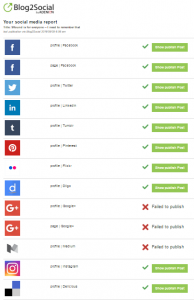 Stefan Müller of Adenion GmbH reached out to me about his new WordPress plugin called Blog2Social and it seems to mostly solve four of my most pressing problems: Blog2Social automates the social sharing I do immediately after posting, Blog2Social also makes it easy to repurpose and reshare old blog posts that are still relevant and unworthy of becoming archived, Blog2Social allows me to schedule as many shares and reshares as far into the future as I like so I can keep a constant drip of content markeing-driven social shares going every day, and Blog2Social shares to a much wider selection of social platforms than do HootSuite,Sprout Social, and Buffer.
Stefan Müller of Adenion GmbH reached out to me about his new WordPress plugin called Blog2Social and it seems to mostly solve four of my most pressing problems: Blog2Social automates the social sharing I do immediately after posting, Blog2Social also makes it easy to repurpose and reshare old blog posts that are still relevant and unworthy of becoming archived, Blog2Social allows me to schedule as many shares and reshares as far into the future as I like so I can keep a constant drip of content markeing-driven social shares going every day, and Blog2Social shares to a much wider selection of social platforms than do HootSuite,Sprout Social, and Buffer.
I am running a generous four-full-week, full-featured, trial of their Premium product. I have several days left to noodle around, plenty of room to explore and get a full-featured experience.
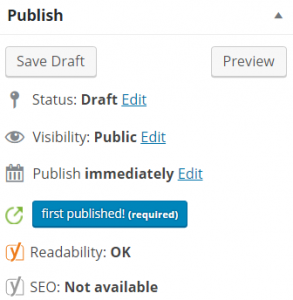 All I needed to do to make it all work is go to the Add New section of my Plugins section then type blog2social into the Search Plugins text box in the upper right. Or, you candownload it directly from the Blog2Social Wordpress.org page and then install it using your Upload Plugin button on your Add Plugins page (if this is all Greek to you, you’re not geeky enough to do any of this, task it to someone else or you’ll become frustrated with the entire install process).
All I needed to do to make it all work is go to the Add New section of my Plugins section then type blog2social into the Search Plugins text box in the upper right. Or, you candownload it directly from the Blog2Social Wordpress.org page and then install it using your Upload Plugin button on your Add Plugins page (if this is all Greek to you, you’re not geeky enough to do any of this, task it to someone else or you’ll become frustrated with the entire install process).
OK, so if you’re a geek or tech savvy at all, once you’re done, the process should be simple for you. Aside from bumping into a couple German-language or mistranslated dialogue boxes during the process of linking up Blog2Social to your social and sharing platforms, it all went smoothly — except I am still having a problem with Google+ and Medium.com, both of which I am currently OK with until I have some time to do a deeper debug.
 And if “p.a.” means per-annum, then the prices are cheap for the plugin: most of us will only need the Smart Premium product, $49/year, offering everything, like Buffer, but with fewer users and profiles. Then there’s the Pro and Business versions of the Premium product, $99/year & $199/year. They do offer a free version but it sucks. You lose access to too many social platforms to make the free version worth it for me as I’d lose Google+, Facebook Pages, to LinkedIn — anything that’s business-related.
And if “p.a.” means per-annum, then the prices are cheap for the plugin: most of us will only need the Smart Premium product, $49/year, offering everything, like Buffer, but with fewer users and profiles. Then there’s the Pro and Business versions of the Premium product, $99/year & $199/year. They do offer a free version but it sucks. You lose access to too many social platforms to make the free version worth it for me as I’d lose Google+, Facebook Pages, to LinkedIn — anything that’s business-related.
That said, if you’re just a singleton blogger and only want to share to all your profiles or have only one account-per-platform, the free version might be perfect for you. And, if you grow, you can always upgrade. What’s more, as I have said before, I encourage you to take advantage of their full-featured month-long trial — it’ll just sit there waiting until you post your first post. It won’t time out on you while you’re trying to find the time, after reading this article, to install and hook up all your accounts.
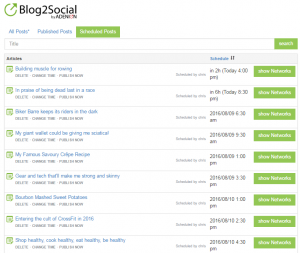 What I like the most about this app is that the processing part of the app happens over on the Blog2Social servers. It doesn’t bog down my own site and you don’t need to rely on Crontab to schedule your posts.
What I like the most about this app is that the processing part of the app happens over on the Blog2Social servers. It doesn’t bog down my own site and you don’t need to rely on Crontab to schedule your posts.
You’ll see all the posts I queued up yesterday that will be drip-dropped across social over the next couple of weeks.
Also, two more things: you need to post the article first, before you share. And Blog2Social reminds you about that on the writer’s dashboard, if you have admin access to the tool.
Also, there’s a useful step between when you click share and Blog2Social shares and this is good. It’s an intermediate page that allows me to edit every post to every platform.
 It allows me to customize all my tweets, add or remove @mentions and #hashtags, and sort out what I’m going to say and how I’m going to say it on Facebook and Google+, be it to my profiles or your Pages.
It allows me to customize all my tweets, add or remove @mentions and #hashtags, and sort out what I’m going to say and how I’m going to say it on Facebook and Google+, be it to my profiles or your Pages.
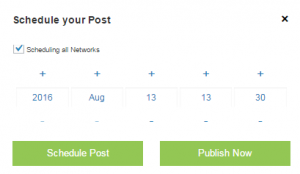 It’s really beautifully thought through and integrated.
It’s really beautifully thought through and integrated.
My next step is to convince my colleagues and friends that they should give Blog2Social a try on the their blogs and then pony up the $49-$199/year to free up some serious time for all of us, especially Madeline Moran’s.
Let me know what you think, especially after you’ve had a chance to try out Blog2Social.
The post Blog2Social: Reshare those evergreen posts appeared first on Inside Social Media.
]]>The post Audienti: Your best friend in sucking up to Google appeared first on Inside Social Media.
]]>
Click to enlarge.
A powerful analytics tool that merges SEO, advertising & influencer engagement
Target audience: Businesses, brands, analysts, digital marketers, advertising agencies, SEO specialists, entrepreneurs, educators, journalists, Web publishers.
 Ihave had access to Audienti for a couple years now, back when it was called OMAlab. If you have a brand site you want to turn into Google catnip, Audienti is for you.
Ihave had access to Audienti for a couple years now, back when it was called OMAlab. If you have a brand site you want to turn into Google catnip, Audienti is for you.
The service not only stalks all of your online profiles, including social, but helps you identify and creep all of your competitors, too. So, it spiders through all your pages, looking for issues with your content, the length of your page titles, the length of the copy, and even Flesch Reading Ease.
Audienti looks for broken links, slow loading times, architectural issues like obese JS and CSS code. Audienti asks you for keywords that are important to you and also for companies you consider to be competitors. It’ll ask you for all your social handles and pages, your Google Analytics creds, and even your Google URL Shortener creds.
 Then, after you do this equivalent of giving a big pack of bloodhounds a scent, they’re off and hunting (and you need to come back maybe in a day, depending on how big, old, and complex your site — and everyone else’s site — is).
Then, after you do this equivalent of giving a big pack of bloodhounds a scent, they’re off and hunting (and you need to come back maybe in a day, depending on how big, old, and complex your site — and everyone else’s site — is).
It’s actually amazing and is actually designed to be the most powerful enabler in the world. If you do everything that Audienti recommends, including engaging all the influencers they recommend and walk you through engaging, you’ll actually have the absolutely best site you can, in Google’s eyes, as is humanly possible short of really implementing a super-aggressive content marketing campaign, which will ultimately add more valuable content that Audienti can help you optimize, promote, and then even secure inbound backlinks.
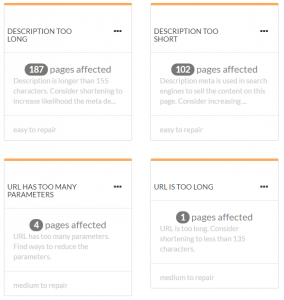 When you first start this, it’s overwhelming. However, Audienti also tries to help you prioritize, helping you choose which of all of the recommendations you should address first — and they’re red (and, ironically, the most important changes you might need to do is upgrade your hosting company, implement a CDN, and hire a coder to optimize your obese CSS and JavaScript).
When you first start this, it’s overwhelming. However, Audienti also tries to help you prioritize, helping you choose which of all of the recommendations you should address first — and they’re red (and, ironically, the most important changes you might need to do is upgrade your hosting company, implement a CDN, and hire a coder to optimize your obese CSS and JavaScript).
When I started my consultancy, it was SEO first, online reputation management second, and then blogger outreach: 1995, 2003, and 2006, respectively. From 2006-2012, I was a PR purist because if I even mentioned SEO in the same sentence as blogger outreach, the honest and earnest PR intentions of my earned media blogger outreach campaigns were sullied.
What I would say, after the campaign contract was signed and we were on our way, I might mention, as a matter of fact, that the opt-in, earned media blog posts we secured during our campaigns generally included “white hat” backlinks that were permanent, stable, honest, earned, and worth their weight in gold.
That’s then, this is now.
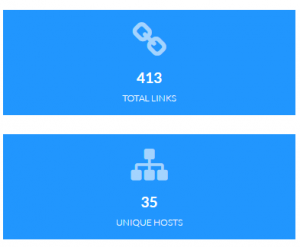 Now, most of the folks who reach out to me looking for blogger outreach want the Google Juice more than they want the brand media mention. They put restraints on our outreaches, only wanting influencers with a page range of at least 5, or a Klout of at least a 50, or an audience above 100,000.
Now, most of the folks who reach out to me looking for blogger outreach want the Google Juice more than they want the brand media mention. They put restraints on our outreaches, only wanting influencers with a page range of at least 5, or a Klout of at least a 50, or an audience above 100,000.
That’s all well and good. But it doesn’t work! My dear friend Pam Teagarden once asked me about my work in blogger outreach, “Chris, are you like Zeus up on a hill, commanding your bloggers to do your will?”
I answered, “No, I am a beggar in the crowd going from person to person, not only asking them to take a freebie stickers from me but compelling them to stick them all over their car’s bumper, the back of their laptops, emblazoned on their Trapper Keeper, and even stapled to a wooden stake and hammered onto their front lawn!”
People hire me to do all of this by hand and now you know my secret: right after the contract is signed for SEO strategy or SEM consulting, I start on Audienti, popping in URLs, keywords, competitors, and all that, just do I can see deep into what’s going on with my client before I start doing things by hand and coming up with recommendations, many of which are recommendations that Audienti offered me as well.
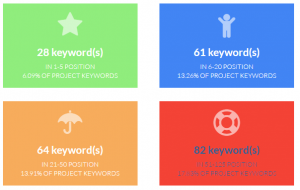 Of course, actually making those changes isn’t easy and the Audienti software doesn’t do it for you, it’s just your pathfinder, your Sherpa, your Search Consiglieri. You’ll still need to hire me or another tradesman to do all that work you don’t want to: social media marketing, blogger outreach, and influencer-engagement; go through every single page of your (big ass) website to make every change that’s content-driven (and maybe these changes can be fixed with a plugin like Yoast SEO or a free CDN).
Of course, actually making those changes isn’t easy and the Audienti software doesn’t do it for you, it’s just your pathfinder, your Sherpa, your Search Consiglieri. You’ll still need to hire me or another tradesman to do all that work you don’t want to: social media marketing, blogger outreach, and influencer-engagement; go through every single page of your (big ass) website to make every change that’s content-driven (and maybe these changes can be fixed with a plugin like Yoast SEO or a free CDN).
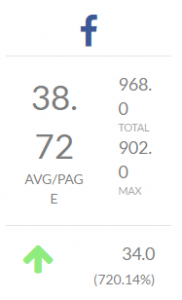 That said, the Audienti software is GPS for your Online Brand.
That said, the Audienti software is GPS for your Online Brand.
No longer can you just buy backlinks and avoid all the hard work.
Now, Google demands that you not only make your site easy to read, easy to access, and simple to find, but Google demands that you actively engage both your real and your potential community — your neighbors — in a real way via commenting on other peoples’ blogs, mentioning them, connecting with them, retweeting them, sharing them, liking them, and especially creating content that will compel them to do the same for you.
Make sense? How’s the battle going?
The post Audienti: Your best friend in sucking up to Google appeared first on Inside Social Media.
]]>The post Glip: A dazzling new project management tool appeared first on Inside Social Media.
]]>
A screenshot of a recent Cruiseable team video chat on Glip.
And the major disappointment that is Disqus
This is part three of a new series on “Rise of a startup: Cruiseable.” Today’s installment looks at how we’re using Glip and Disqus. Also see:
• Part 1: Great tech startups begin with a great development team
• Part 2: Followerwonk: A powerful tool to up your Twitter game
Target audience: Entrepreneurs, startup teams, angel investors, venture capitalists, developers, businesses, innovators, educators, students, journalists, travel analysts.
 For months, we’ve been hacking our way through the launch of the Cruiseable website and mobile app by relying on a frankly random collection of collaboration tools, including Dropbox, Google Drive, Gmail, Google Sites, Google Groups, Google Hangouts, Skype, Basecamp, Asana and Trello.
For months, we’ve been hacking our way through the launch of the Cruiseable website and mobile app by relying on a frankly random collection of collaboration tools, including Dropbox, Google Drive, Gmail, Google Sites, Google Groups, Google Hangouts, Skype, Basecamp, Asana and Trello.
It’s a small miracle we managed to launch with a beautiful-looking site despite the mishmosh of tools that resembles a five-car pileup on I-80.
But now we’ve hit upon an integrated tool that brings order to the chaos: Glip.
It’s the coolest project management tool that you’ve never heard of. And we’re a startup, so we don’t have a big budget for this stuff. We’re paying $5 per team member per month for 10 staffers, which isn’t nothing — but it’s well worth the investment.

A screenshot of Cruiseable’s Glip account.
Glip is one part communications platform, one part task management tool and one part resource clearinghouse. Up until a month ago we still had team members and contractors emailing each other on their personal accounts (and I’d wince at every hotmail and aol email address) and we’d wonder why our correspondence would get lost or go unanswered.
Now, Glip tracks every written communication you’ve had with each colleague, either one one one, or as part of a Team (Cruiseable General, Growth hacking, Marcom, Business Development) or an ad hoc group that you set up with specific individuals. It’s like an archived Skype chat, only friendlier and more versatile.
You can set tasks for people to carry out (or to ignore — but at least there’s a record!). You can create a resource database by adding relevant Notes. You can add other documents in other formats to a nearly bottomless directory of Files.
Business video chat at an affordable price
The coolest feature, though, is the one that still needs some work: video chats. We switched from Skype (which kept crashing with six or more participants) to Google Hangouts (which has always had shitty resolution and maxed us out at 10) to Glip and were stunned at the fidelity of the video. WOW! The videocam images really pop, at least for those of us with modern laptops.
You can invite outsiders into your circle, which we’ve done, to good effect. And you can share your screen. (Goodbye, overpriced GoToMeeting and fussy JoinMe.)
On the downside, Glip still needs some work. Its video chat feature appears powered by a third party, Zoom.us, and every time I start a video chat, it prompts me to download the zoom.us app. [Note: Glip has now partnered with RingCentral.] And Glip’s Twitter presence is pretty much nonexistent.
Glip has integrations with Dropbox, Box, Evernote, Google Drive and Hangouts, which we have yet to explore. All in all, it’s genius. For an agile startup like Cruiseable, this is just what we needed. Thank you, Glipsters!
Disqus: We’re using it, but we’re not happy about it
Our mantra at Cruiseable is, build where we need to and borrow where it’s good enough.
Any modern startup has to offer customers and users a voice on your site or platform. So we needed a conversation solution that wasn’t a bulletin board.
I’ve long been disappointed by the dismal state of comment plug-ins. Intense Debate wasn’t an option; we built our own CMS instead of using WordPress. We’ve heard good and bad things (but mostly bad) about Livefyre. Facebook Comments was tempting, but it lacked the ability to integrate with our users’ avatars/icons. There are others out there, but none seemed particularly robust.
So we went with dull and serviceable but reliable Disqus.
What we didn’t realize is how utterly unconfigurable it is.
Want to increase the tiny font size, which was clearly engineered by 20somethings and not for an audience of 40- to 70-year-olds? You can’t.
Want to add color to the bland gray color scheme? Want to link to the user’s profile page on your site instead of to her previous comments on Disqus? Want to say ADD IMAGE instead of relying on the teeny tiny hidden-away image icon? Want to add a Flag link at the bottom of a comments on your site? Can’t, can’t, can’t, can’t.
Disappointing would be an understatement for a product from a company founded in 2007.
The discussion industry, such as it is, needs a serious kick in the ass.
The post Glip: A dazzling new project management tool appeared first on Inside Social Media.
]]>The post Tools to find and engage your true-blue fans appeared first on Inside Social Media.
]]>
Chris details his online influencer process
Target audience: Marketing professionals, SEO specialists, PR pros, brand managers, businesses, nonprofits, educators, Web publishers, journalists.
 Today I’ll share the how I go about researching, collecting, discovering, and populating my online influencer lists. A few of my offerings include online influencer outreach, long-tail blogger outreach, and social media marketing so a major part of my services include sifting through the entire Internet to come up with a hyper-targeted list of online influencers with whom to engage during the online influencer outreach, long-tail blogger outreach, and social media marketing campaigns I run for my clients.
Today I’ll share the how I go about researching, collecting, discovering, and populating my online influencer lists. A few of my offerings include online influencer outreach, long-tail blogger outreach, and social media marketing so a major part of my services include sifting through the entire Internet to come up with a hyper-targeted list of online influencers with whom to engage during the online influencer outreach, long-tail blogger outreach, and social media marketing campaigns I run for my clients.
Bringing SDL SM2, Inkybee & Google Search into GroupHigh
 SDL SM2, Inkybee, Google Search, and especially GroupHigh serve very particular purposes to me. I am a long-tail blogger guy, which means I don’t limit my outreaches to a quick 100 social media influencers but across thousands.
SDL SM2, Inkybee, Google Search, and especially GroupHigh serve very particular purposes to me. I am a long-tail blogger guy, which means I don’t limit my outreaches to a quick 100 social media influencers but across thousands.
To me, SM2 has the best bulk research tool because it’s a social media metric and analytics tool. While it isn’t meant to be a blogger discovery tool, it’s one of the most interesting because it’s just looking for keyword mention and not labels. So, it’ll dig as deeply and broadly as possible. I upload big batches of keywords and then take the results and chop off the fat and then take the resulting URLs and upload them to GroupHigh, where their powerful app takes those blog URLs a thousand at a time and populates each one with all of its related social media metrics.
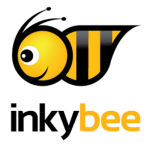 When I want to be more blog and blogger specific, Inkybee definitely has the best blog research tool — and by best, I mean least tedious. Unlike GroupHigh, which makes one painfully click on little stars in order to select blogs for campaign lists, Inkybee allows me to pop in keyword terms and then go to sleep. The next day, I go in and collect big nets of blogs that I can later slice and dice using a much more efficient tool: Excel or Google Apps Sheets. Dicking around with a browser and database and Internet refresh lag is something I really try to avoid, and I really hate scrolling and clicking, one by one, in order to jump through an app-defined tool.
When I want to be more blog and blogger specific, Inkybee definitely has the best blog research tool — and by best, I mean least tedious. Unlike GroupHigh, which makes one painfully click on little stars in order to select blogs for campaign lists, Inkybee allows me to pop in keyword terms and then go to sleep. The next day, I go in and collect big nets of blogs that I can later slice and dice using a much more efficient tool: Excel or Google Apps Sheets. Dicking around with a browser and database and Internet refresh lag is something I really try to avoid, and I really hate scrolling and clicking, one by one, in order to jump through an app-defined tool.
One thing I wish Inkybee had was a much better outreach and engagement tool, where GroupHigh thrives, and also the ability to take a bunch of social media URLs and find the associated blogs (Inkybee can’t do that but GroupHigh can) and integration with my email, something GroupHigh is the best at.
GroupHigh is truly a social media CRM and it works even better than if you were going to try to hack it using SugarCRM or even Salesforce. So, to me, Inkybee is the best research tool. The only real reason why I use SM2 at all is because neither GroupHigh nor Inkybee supports bulk upload of search terms, only the bulk upload of URLs. That’s a real blind spot for them both.
 So, my process is: set up SDL SM2, add all the keywords I have collected through going down a Wikipedia rabbit hole, let it go to parse, search, and churn. Then, I take those keywords and laboriously hand-add these same keywords into InkyBee, making sure I distribute them across lots of lists (otherwise, the app breaks since it only had a limit of 1,000 blogs per list, a ceiling they never mention on the site but do if you email). If you break that ceiling, though, and you complain enough, maybe they’ll be able to crowbar it out for you — once (that just happened to me — I’m more careful now).
So, my process is: set up SDL SM2, add all the keywords I have collected through going down a Wikipedia rabbit hole, let it go to parse, search, and churn. Then, I take those keywords and laboriously hand-add these same keywords into InkyBee, making sure I distribute them across lots of lists (otherwise, the app breaks since it only had a limit of 1,000 blogs per list, a ceiling they never mention on the site but do if you email). If you break that ceiling, though, and you complain enough, maybe they’ll be able to crowbar it out for you — once (that just happened to me — I’m more careful now).
Finally, I go over to Google and do simple searches like “top government intelligence blogs” or “top mommy blogs” or “top government twitter profiles” and stuff like that. Whenever I find a page, I go to source, scrape the blogs and Twitter profiles using some mad Regex, and then I take those 50-record text lists and put them right with my SM2 and Inkybee lists and then upload all the URLs (blog, Twitter, YouTube, Instagram, Facebook, Google+, etc.) into GroupHigh’s Import URLs tool, which does limit you to 1,000 at a time but if I show line numbers in my TextPad, I can break my 4,000 record lists into 973-records each.
 Then, GroupHigh churns and scrapes and connects and searches and tries to find the blog associated with the YouTube, Twitter, Facebook, and Instagram URLs I upload and the YouTube, Twitter, Facebook, and Instagram associated with the blog URL I upload (Inkybee just can’t do this, it only accepts blog URLs and just chokes when I try to find a blog using other social media venues, though it will try to find all the blogs associated with all the followers I have on Twitter, so I know that tool exists, it’s just not packaged in the way I want or need it).
Then, GroupHigh churns and scrapes and connects and searches and tries to find the blog associated with the YouTube, Twitter, Facebook, and Instagram URLs I upload and the YouTube, Twitter, Facebook, and Instagram associated with the blog URL I upload (Inkybee just can’t do this, it only accepts blog URLs and just chokes when I try to find a blog using other social media venues, though it will try to find all the blogs associated with all the followers I have on Twitter, so I know that tool exists, it’s just not packaged in the way I want or need it).
When all is said and done, I prune, prune, prune, prune, prune. I chop out all the mainstream media venues if they’re not germane to the campaign. I remove any zombie blogs, spam blogs, abandoned blogs, and any outliers with too few or no social media moxie or way too much, depending on the sexiness or generosity of the client’s offer or product.
 Many clients want to dig through the list before we release the hounds (which is important especially if you don’t know the particular blogosphere or industry as well as your client does and might not be able to protect them as well as they might be able to protect themselves — even more essential when your client is controversial or political).
Many clients want to dig through the list before we release the hounds (which is important especially if you don’t know the particular blogosphere or industry as well as your client does and might not be able to protect them as well as they might be able to protect themselves — even more essential when your client is controversial or political).
Then, depending on what the campaign requires, I’ll run the entire campaign from the GroupHigh dashboard by going through the hundreds or thousands of online influencers by hand, reaching out to them by message-modeled emails, tweets, LinkedIn InMails, or Facebook Messages; or, if it’s a long tail blogger outreach email campaign, I’ll probably use a combination of Google Apps for Business Webmail and Yet Another Mail Merge from Romain Vialard (great app and great guy, by the way — go for the paid version, for sure).
The post Tools to find and engage your true-blue fans appeared first on Inside Social Media.
]]>The post Social media metrics for small businesses: 4 tools appeared first on Inside Social Media.
]]>Post by Adi Englander
 One of the biggest challenges that small businesses face with social media is cutting through the bewildering fog of metrics to focus on what truly matters.
One of the biggest challenges that small businesses face with social media is cutting through the bewildering fog of metrics to focus on what truly matters.
Why is this such a big challenge?
Because according to Manta, 60% of businesses reported that they didn’t gain any benefit from social media engagement.
As David Spark pointed out in the aptly named article “Are you using social media to serve your needs?”: “Every time you delve into a new social media program, ask yourself what purpose it fills for you personally or professionally.”
The antidote is to “focus entirely on what you’re trying to accomplish with your social media program or campaign and then identify the Key Performance Indicators that will tell you, over time, whether you’re getting there.”
Unfortunately, only a few tools show the effect that your social media activity is creating in the real world.
So, if you’d like to take a good look at what’s actually converting and bringing in sales, these four tools are absolutely essential.
Oktopost
Oktopost is the only social media platform designed specifically for B2B management.

While a tool like Buffer helps you schedule posts and makes sharing easy, Oktopost is the first solution that establishes the ROI of social media by integrating clicks and conversions into today’s social-centric marketplace.
When it comes to social media management, one key metric is tracking the number of leads generated through different marketing efforts. With Oktopost you get a Leads tab that shows the conversions achieved from each platform. This Leads tab tracks from which social media network the conversions came, along with the total number of conversions by campaign, all of which can be exported via CSV.
Klout
Klout is the golden standard in measuring social media influence and reach.
 Image Credit: http://allthingsd.com/files/2012/08/Klout-dashboard-feature.jpg
Image Credit: http://allthingsd.com/files/2012/08/Klout-dashboard-feature.jpg
Klout tracks multiple social media platforms and measures your overall presence with a numerical score. It also shows you which social media outlets are performing the best as well as where there’s room for improvement.
By using over 35 different variables to measure your social media influence, Klout’s “True Reach” feature is especially helpful for because it separates true followers from bots or spammers to give you a realistic measure of your brand’s popularity.
Klout even helps you identify sharable content. In the above dashboard, you can view suggested articles related to the topics based on your profile. Sharing these articles improves your Klout score and, more importantly, connects you to the influencers who matter in your niche.
Hootsuite
Hootsuite is a social media management tool that integrates different platforms like Twitter, LinkedIn, Facebook, and more into a single dashboard.

Image Credit: https://www.brandwatch.com/wp-content/uploads/2013/08/hootsuite-screenshot.png
One of the most helpful metrics Hootsuite tracks is what’s called “sentiment.” Like its title suggests, “sentiment” measures the emotion behind a social media mention. Was the person sharing the post happy, angry, sad, excited, or disappointed? This can be especially helpful to determine if your brand is turning sour among users and doing the right things.
For business owners who lack time to manage social media, Hootsuite’s a boon because you can see streams from Twitter, Facebook, Instagram and over 50 other social media accounts on the Hootsuite dashboard. You can even manage multiple accounts on the same channel like different Facebook pages or even add employee accounts.
The most powerful feature on HootSuite is the influencer tab. As you can see, the influencer reveals the actual followers of particular influencers, the number of updates they have posted, their Klout score, whom they are following, and bio details. This information helps you craft content that connects with the top performers in your industry and builds truly profitable relationships.

Cyfe
Cyfe is a genuinely all-in-one dashboard.

For social media, this means you can integrate your campaigns into the overall stream of your business and measure not just what’s generating clicks and shares … but actual sales.
Most of the tools featured above offer a centralized dashboard for social media.
Cyfe , on the other hand, offers a dashboard where you can see web-analytics, social-media activity, marketing activity, sales activity, progress of projects, and so on. By giving you the big picture, Cyfe saves time, money, and heartache.
The social media dashboard (shown below) for example offers all your data in a visually appealing and easy-to-manage manner. You can track the total reach of your posts, their views, number of people who engaged, and virtually any other metric.
Metrics that matter
For most small businesses, social media can be a serious waste of time, effort, and money.
Why?
Because they’re not able to truly measure the value of their activities in the real world.
The four social-media tools above solve that fundamental problem and allow you to measure your progress and see what’s actually working. A solid social media strategy, coupled with the right tools can make
The post Social media metrics for small businesses: 4 tools appeared first on Inside Social Media.
]]>The post Google Webmaster Tools part 2: Sitemaps & data highlighting appeared first on Inside Social Media.
]]>This is the second of a series on how to use Google Webmaster Tools. Also see part 1:
• Google Webmaster Tools for dummies
Target audience: Marketing professionals, SEO specialists, PR pros, brand managers, businesses, nonprofits, educators, Web publishers, journalists.
 Last week I shared some Google Webmaster Tools tips and tricks with you. This week, I have two more: sitemaps and data highlighting. Sexy stuff, huh?
Last week I shared some Google Webmaster Tools tips and tricks with you. This week, I have two more: sitemaps and data highlighting. Sexy stuff, huh?
If you’ve been obsessing about your Google Analytics numbers, cruising the SEO boards, and picking through Moz and Woorank, wondering what Google wants and needs from you, then let me enlighten you.
 Google wants you to be successful! They want you to do all the free work in the world on your own site to make it easier for them to make the handoff from Google Search to Google Found, where your site and your content is the Found.
Google wants you to be successful! They want you to do all the free work in the world on your own site to make it easier for them to make the handoff from Google Search to Google Found, where your site and your content is the Found.
So, instead of guessing what Google needs, you can work on conforming to Google’s simple list of essential changes that you will need to make in order to build the sort of seamless web of trust that Google demands from you before you become a respected and essential go-to in the wide world of search. And it has less to do with backlinks and Google juice from PR6-9 sites circa 2015 than it has in the recent past.
The short answer is simple: Create a wicked-quick, factual, easy to understand, mobile-optimized, machine-structured, beautiful site — that’s the key as we move into Google’s future. It used to be that all you needed to have your site perform was function; however, Google abhors both a vacuum and a high bounce rate.
 If the visitors whom Google passes off to you in good faith via mobile, tablet, or web bounce for whatever reason, you’re toast. Being as visually appealing and mobile-friendly is as important in 2015 as is being highly relevant. People are as likely to bounce if they don’t like how your site looks or responds as they are if they don’t like what you have to say, sell, or share.
If the visitors whom Google passes off to you in good faith via mobile, tablet, or web bounce for whatever reason, you’re toast. Being as visually appealing and mobile-friendly is as important in 2015 as is being highly relevant. People are as likely to bounce if they don’t like how your site looks or responds as they are if they don’t like what you have to say, sell, or share.
So, let’s explore what Google says about structured data, how both Google Webmaster Tools and Bing Webmaster Tools demand that you have a Sitemap.xml on your site; and, if you don’t, how you can use Google’s data highlighter to train Google as to how your site’s content and pages are structured explicitly through an interactive “show me” that Google is happy to walk you through. Finally, if your site isn’t fast enough in receiving Google’s search handoff, then you won’t be getting that handoff for much longer.
And, aren’t you mobile native yet? No? Get with the program, Jack!
Google speaks structured data: Sitemap.xml
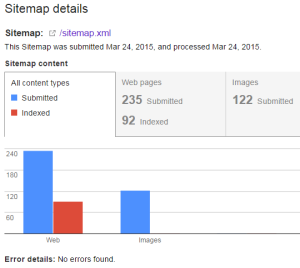 In a post-RSS and ATOM world, Google needs a little help, especially when everyone’s trying to get so clever. I have a client who had decided to overrule Drupal’s default slugs and posts everything with the same URL structure: www.domain.org/blog-post, www.domain.org/site-page, www.domain.org/contact-form, www.domain.org/organization-news, www.domain.org/about-page, www.domain.org/press-releases, www.domain.org/articles, and www.domain.org/announcements are all different categories and types of pages.
In a post-RSS and ATOM world, Google needs a little help, especially when everyone’s trying to get so clever. I have a client who had decided to overrule Drupal’s default slugs and posts everything with the same URL structure: www.domain.org/blog-post, www.domain.org/site-page, www.domain.org/contact-form, www.domain.org/organization-news, www.domain.org/about-page, www.domain.org/press-releases, www.domain.org/articles, and www.domain.org/announcements are all different categories and types of pages.
 Blog posts, articles, press releases, and announcements are all considered to be ‘articles’ by Google but since my client hasn’t defined an easy-to-understand URL or site formatting that Google can understand, it needs a strong assist, and Google hopes that a well-made sitemap will do that trick.
Blog posts, articles, press releases, and announcements are all considered to be ‘articles’ by Google but since my client hasn’t defined an easy-to-understand URL or site formatting that Google can understand, it needs a strong assist, and Google hopes that a well-made sitemap will do that trick.
Google needs your sitemap for two reasons: to understand your site (content and site architecture) and to grok when and how often you make site updates. If you don’t have a dynamic or frequently-updated sitemap.xml document on your site, you’ll lose out to those who do. Yes, Google can spider your site by hand, but why care about your site when other sites with very similar content are willing to take the extra step of complying with Google’s wishes?
Sitemaps can pass Google a lot more than just site structure, updates, and content, such as hreflang content and whatnot, but don’t worry too much about advanced features — care more about having one at all. It’s not guaranteed (though it is offered by default on Squarespace, which is convenient. If you’re on Squarespace, it can be found on www.yourdomain.com/sitemap.xml).
Google likes structure: Data highlighter
 If, like my client, you don’t have a sitemap installed on your site yet, you’re not ruined. Not at all.
If, like my client, you don’t have a sitemap installed on your site yet, you’re not ruined. Not at all.
Google has a very mind-numbing tool that can help you walk Google through your entire site, page-by-page and link-by-link, allowing you to explicitly define each and every page according to exactly what you’re saying, how you’re saying, by whom, and then down the rabbit hole of granularity, all the way down to content as specific as:
- Articles
- Book Reviews
- Events
- Local Businesses
- Movies
- Products
- Restaurants
- Software Applications
- TV Episodes
 So, what can this do for you? Well, since Google is a bit dense, it’ll be your job to actually give Google’s spiders and bots a first-person tour of your entire site.
So, what can this do for you? Well, since Google is a bit dense, it’ll be your job to actually give Google’s spiders and bots a first-person tour of your entire site.
And, Google Data Highlighter is a little like their Google Authorship program (RIP), except in the case of the highlighter tool, it’s your job to do all the work yourself.
What’s in it for you? Well, according to Google, it will “improve your look in search” and “let users see your key information right in search results.”
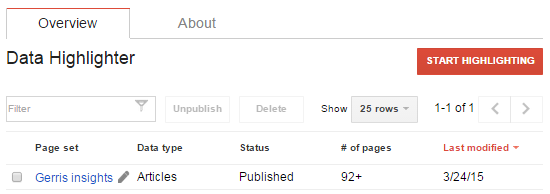 So, if you ever wonder how movie, event, and news sites actually have their site content integrated in search results and felt green with jealousy? Well, this is how.
So, if you ever wonder how movie, event, and news sites actually have their site content integrated in search results and felt green with jealousy? Well, this is how.
So, even if — when — Google asks you go through an hour’s worth of pages, correcting each attempt at structuring your data that Google tries, do it until you’re done. It’s worth it.
If you’re willing to bring Google to structured data and then have the patience to wait until it drinks, you’ll be handsomely rewarded, I promise.
Page speed and optimizing for mobile
Psyche. I think I’ll put off the important subjects of how important page speed (and quickness) is to Google and how essential being mobile-ready and mobile-optimized is for your present and future Google Search success until next week because I am on holiday in Paris and really want to take a jog in le Jardin des Tuileries before it gets too late so I’ll sign off for now.
The post Google Webmaster Tools part 2: Sitemaps & data highlighting appeared first on Inside Social Media.
]]>
